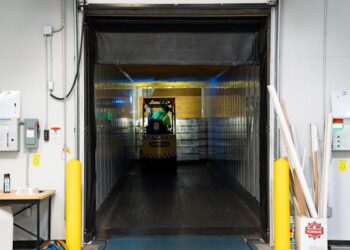Visa Provisioning Service $0 explained: Why it appears, how it works, is it safe, and what to do when you see it.
You’re checking your bank or credit card statement, and there it is: “Visa Provisioning Service $0.00 (pending)”. You blink. You tilt your head. You ask: “What the heck is that?” And more importantly, should I freak out or just chill?
I had the same reaction when I first saw this cryptic line. Over time, digging through technical docs, bank disclosures, forums, and real user stories, I’ve pieced together what it truly means; and why seeing it wasn’t the financial apocalypse I feared. In this article, I’ll walk you through in clear, no-nonsense terms:
- What the Visa Provisioning Service is
- Why a $0 charge is used
- How it fits into tokenization, digital wallets, and card-on-file systems
- When to worry (and when not to)
- What you can do if you see it
- What Visa is doing to evolve the ecosystem
- Some nuanced contradictions, pitfalls, and gray zones I discovered
Let’s unravel this mystery together.
What You'll Discover:
Understanding the Basics: What Does “Visa Provisioning Service” Mean?
“Provisioning” in Payment Terms
In payments and fintech, provisioning refers to the process of preparing something; in this case, preparing a card or account for future use in a secure environment. It’s not the charge itself, but the setup. When you see “Visa Provisioning Service,” you’re seeing that preparatory step.
The $0 Charge as a Verification Tool
The key point: the “charge” is $0. That’s not a bug. That’s intentional. It’s a zero-dollar authorization, sometimes called a pre-verification check. The merchant or service requests authorization to confirm that:
- The card number is valid
- The card is active (not canceled or blocked)
- The issuing bank is okay with the request
Because it’s $0, no funds are actually moved; nothing is deducted. In many cases, this pending line will disappear within days.
Think of it like knocking on your bank’s door and whispering, “Hey, are you there?” rather than walking in and taking money.
Why Do Merchants and Wallet Providers Use This?
Here’s where the use cases kick in:
- Digital wallets like Apple Pay, Google Pay, or Samsung Pay use this to verify your card before tokenizing it.
- Subscription services and recurring billing platforms often perform a zero-dollar check when you store a card for automatic payments.
- Automatic card info updates use this method to verify that your updated card details (like expiry or card number) are valid.
- Even merchants that already have your card may use it to re-verify details before a large transaction or account update.
So, that cryptic line “Visa Provisioning Service $0” is merely the permission slip before the real play; enabling you or a merchant to transact later in a safer way.
The Mechanics: How This Process Works Under the Hood
To appreciate the full picture, let’s peer behind the curtain and see the architecture and flow.
Tokenization and Visa Token Service
Central to this process is tokenization. Instead of sending your real 16-digit Visa card number (PAN) to a merchant or wallet, Visa replaces it with a token; a random identifier. That token is useless if stolen.
Visa also uses systems like Credential Enrichment and Card-on-File Data APIs to keep your card details current and secure. So, provisioning is essentially linking your card’s digital version to a particular wallet or merchant environment, but doing it safely.
Authorization Flow
Here’s a simplified version:
- You or a merchant initiate a tokenization or card setup.
- Visa or the payment processor sends a zero-dollar authorization request to your card issuer.
- The issuer checks and approves or declines depending on card status.
- If approved, the tokenization or linking is allowed to proceed.
- The $0 authorization shows up temporarily as “pending.”
- After a few hours or days, that pending line disappears.
If the issuer declines; for example, if the card is blocked or inactive; the provisioning fails. In that case, you might see “Visa Provisioning Service $0 declined.”
This process is standard in modern payment systems, especially now that digital wallets and recurring billing dominate.
Real-Life Examples and Stories
Seeing how this appears in real life can help make sense of it. Users online have shared countless versions of this experience.
- One person saw “Visa Provisioning Service” appear randomly even though they hadn’t added the card to a wallet. They thought it might be fraud.
- Another noticed it right after linking a new card to Netflix; it vanished within a day.
- Some people reported it popping up a few times a year even without any new subscriptions or wallet additions.
- Occasionally, users have seen multiple $0 provisioning lines on a shared account, especially after a bank updated card credentials automatically.
These examples highlight a truth: sometimes it’s perfectly normal, and other times it’s confusing. The process itself is safe, but the context can make it seem suspicious.
When It’s Harmless vs When You Should Be Concerned
Knowing when to relax versus when to investigate is crucial. Let’s separate harmless from potentially risky cases.
Usually Harmless
You can probably relax if:
- The amount is $0 or a few cents.
- It appears right after you add a card to a wallet or a subscription.
- The line is marked “pending” and disappears within a few days.
- You recently updated or reverified a card somewhere.
- Your bank confirms it’s part of their standard verification process.
In such cases, nothing is transferred; it’s just a handshake between systems.
Red Flags and Reasons to Investigate
However, be cautious when:
- The $0 line stays for longer than a week.
- Multiple $0 entries show up from merchants you don’t recognize.
- You haven’t made any changes to your wallet or subscriptions.
- You receive suspicious emails or texts mentioning Visa provisioning.
- You’ve had data breaches or recent account compromises.
These may indicate someone is testing your card for fraud; using the $0 check to confirm whether it’s active before attempting larger unauthorized transactions.
If that happens:
- Contact your bank or card issuer immediately.
- Freeze or block your card.
- Request a replacement card number.
- Review all recent transactions.
- Check your digital wallets for unauthorized cards.
Even though the charge is $0, it can be a warning sign; not an attack, but the knock before one.
The Contradictions and Gray Zones
The more you look into Visa Provisioning Service, the less binary it becomes. Here are some oddities and contradictions that even experts debate.
| Scenario | Confusion | What It Might Mean |
|---|---|---|
| You never added your card anywhere, yet a $0 charge appears | It happens to many people unexpectedly | Likely due to automatic card updates by merchants you’ve used before |
| The $0 charge never disappears | Sometimes stays visible indefinitely | Could be a glitch or delay in transaction cleanup |
| You get emails about “Visa provisioning declined” | May look official but are sometimes phishing | Always verify directly with your bank, not through email links |
| You see multiple $0 authorizations in a week | Can trigger suspicion | May happen when Visa systems refresh tokens or merchants reverify cards |
These gray zones show how the same system that increases security can also cause confusion. You can’t always predict when it’ll show up; or why.
What Visa and the Payment Industry Are Doing Next
This whole process is evolving fast. Visa knows users are confused by “provisioning charges,” so it’s refining how they appear and how fraud is filtered out.
Visa Provisioning Intelligence (VPI)
In recent years, Visa introduced Visa Provisioning Intelligence (VPI); a machine learning model that scores every provisioning request. It identifies risky attempts and blocks them before they reach your account. That means fewer fraudulent $0 checks and fewer reasons to panic.
Improved Token Management
Visa is also expanding its Token Service, letting banks and merchants refresh or revoke tokens instantly. If your card expires or is reissued, Visa can update it automatically for legitimate merchants without requiring you to reenter details.
Smarter Issuer Controls
Banks are implementing smarter systems to detect unusual provisioning attempts. Some even send real-time alerts if a new device tries to add your card. Others decline provisioning if they sense something off; like a request coming from another country.
Transparency and Awareness
The final layer is education. More banks are now explaining these $0 authorizations upfront, making sure users understand what they are. Over time, the hope is that these won’t trigger panic anymore.
Step-by-Step: What to Do When You See “Visa Provisioning Service $0”
Here’s a simple roadmap you can follow:
1. Don’t Panic Immediately
A $0 authorization is common and often harmless. Give it a day or two to see if it disappears.
2. Review Your Recent Actions
Think about what you did recently; added a card to Apple Pay? Signed up for a subscription? Updated a saved payment method? If yes, that explains it.
3. Keep an Eye on It
If it vanishes in a few days, all good. If it lingers or repeats, note the date and time; you’ll need that if you contact your bank.
4. Contact Your Bank if Unsure
Your bank’s support can confirm whether it was a legitimate Visa authorization. Always use official contact channels; never links from emails or messages.
5. Secure Your Card
If there’s any doubt, block or replace your card. Most banking apps let you do this instantly.
6. Audit Connected Services
Review which websites and apps have your card saved. Remove old or suspicious entries.
7. Turn on Notifications
Enable transaction alerts on your card or banking app. That way, you’ll see new authorizations as they happen.
This isn’t about paranoia; it’s about awareness. When you understand what’s happening, you stay in control.
Why You’ll See This More Often in the Future
Ironically, the safer digital payments become, the more you’ll see zero-dollar provisioning checks. It’s not a flaw; it’s a symptom of better security.
Here’s why:
- More digital wallets mean more provisioning events.
- More subscriptions mean more periodic card verifications.
- Frequent token refreshes mean occasional background checks.
- Fraud prevention systems will trigger more pre-verification checks.
In short, it’s not a glitch. It’s a signal that your card data is being protected through controlled verification steps.
Key Takings
- Visa Provisioning Service verifies your card for wallets, merchants, and tokens; it’s not a real charge.
- The $0 amount is a test authorization, confirming your card is valid and active.
- In most cases, it’s harmless and disappears within a few days.
- It can, however, be misused by fraudsters to test stolen card numbers.
- Always monitor your account for multiple or unexplained entries.
- Visa’s Provisioning Intelligence system is helping prevent fraudulent provisioning attempts.
- You’ll likely see more of these in the future as payment systems become smarter.
Additional Resources:
- Visa Token Service: Learn how Visa’s tokenization system protects your card data and powers secure digital payments.
- Visa Provisioning Intelligence Overview: Explore Visa’s latest fraud prevention tool designed to block suspicious provisioning and token misuse.





